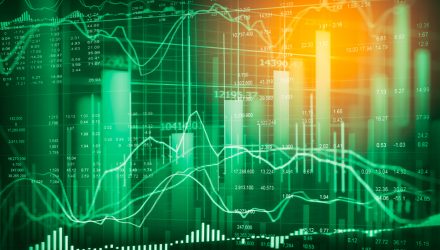Goldman Sachs Asset Management announced the launching of their newest sustainability focused ETF, the Goldman Sachs Bloomberg Clean Energy Equity ETF (GCLN), a fund that seeks to track an index constructed by both Goldman Sachs and Bloomberg within clean energy.
Katie Koch, CIO of public equity at Goldman Sachs, explained on a call with reporters on Wednesday that this fund will broaden the firm’s suite of decarbonization products for investors, and it has a much wider scope into the clean technology industry than what is currently being offered in markets.
“We continue to believe that the energy transition is going to be a revolution that is one of the great wealth creating opportunities of the next couple of decades; it will have the scale of the Industrial Revolution and the speed of the digital revolution,” Koch said.
This ETF pulls from a universe of 200 companies within the Bloomberg Goldman Sachs Global Clean Energy Index that are both pure-play clean energy companies and transitional companies, and it provides multi-sector and global exposure that provides the potential for lower volatility. The index is weighted by impact and relevance with a tilting to impact, and because of this weighting, the fund drives capital to companies that have the greatest growth potential within clean energy.
The index’s underlying methodology is set to capture the growth in clean energy as new technologies develop and offers exposure to what Goldman Sachs believes will be a $100 trillion or more, multi-decade investment opportunity within clean energy.
Why GCLN Is Perfectly Positioned Right Now
Clean energy is currently underperforming in markets and has presented an attractive entry point for advisors and investors now. GCLN offers this exposure by investing in the “clean energy enablers” that are promoting growth within the fight against global warming and climate change.
Vikrum Vora, portfolio manager on the energy infrastructure and renewables team at Goldman Sachs, explained that clean energy is a non-cyclical industry and the renewables sector has tremendous room for growth, as the capital required to reach net-zero will be irrespective of economic cycles.
“Looking at the companies that operate in the space, we’ve seen most of the bell weather companies revise their long-term guidance higher, not lower since 2020,” said Vora. “The equities don’t reflect that revision and guidance, and in earnings, even if you take into account the longer-term higher interest rates.”
Two companies that highlight the range of securities within the fund are NextEra Energy, which is the largest solar and wind energy producer in the U.S., and Contemporary Amperex, which is the largest battery manufacturer globally.
“We genuinely believe that the energy transition will be among the largest, most important opportunities of the next few decades,” said Albert Chung, head of global analysis for BloombergNEF. “Our research shows that $755 billion was invested in the low carbon energy transition last year; that’s money going into building physical assets projects like wind, solar, and other areas. That figure has roughly doubled since the Paris Agreement was signed in 2015.”
Chung explained that investment into the energy transition needs to reach $4 trillion by 2030 in order to align with the Paris Agreement goals of net-zero by 2050. GCLN is positioned to capture this exponential growth.
GCLN has an expense ratio of 0.45% and trades on the Cboe.
For more news, information, and strategy, visit the Future ETFs Channel.

